Winter roses
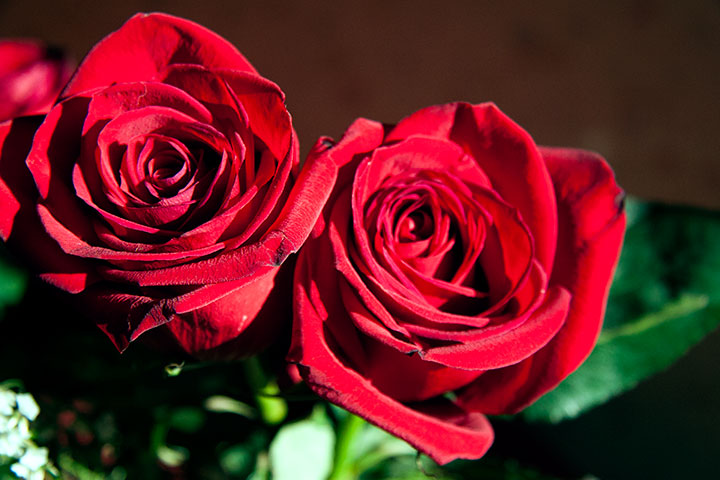
Despite the time of year, we’ve got brilliant sunshine streaming in the windows. Judging by how well the Christmas roses are still doing, we’re not the only ones happy about it!

Despite the time of year, we’ve got brilliant sunshine streaming in the windows. Judging by how well the Christmas roses are still doing, we’re not the only ones happy about it!
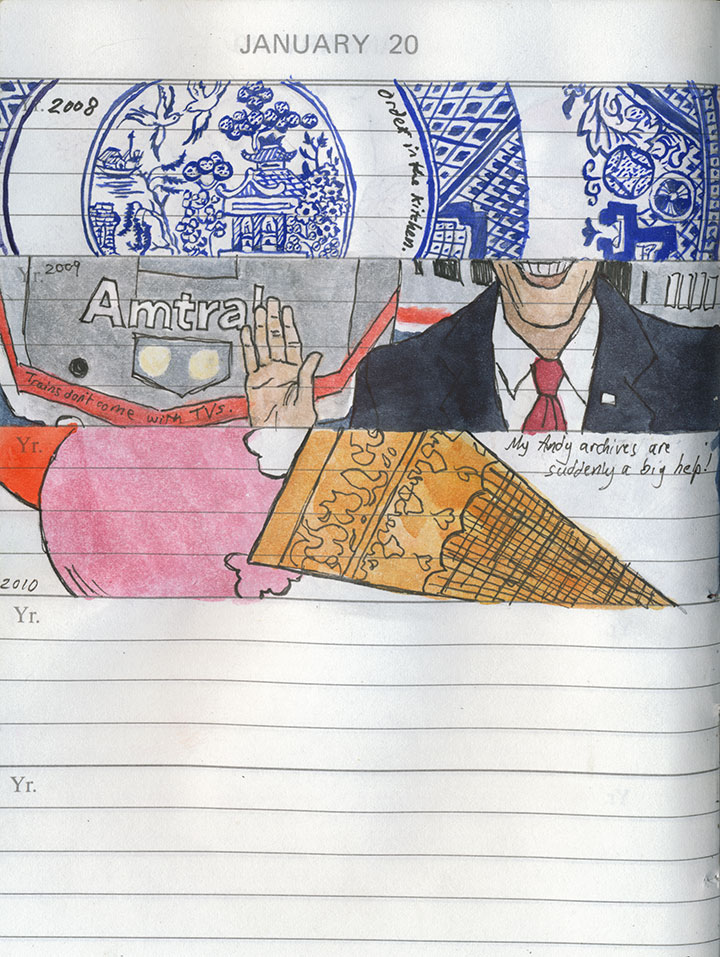
This might seem a little strange, coming from me, but the New Year’s resolution at the top of my “art” category is to draw more.
I mean that I’d like to spend more time with my sketchbooks—with everything else that happened last year, there just didn’t seem to be a spare second for observing the moment and jotting it down.
The daily book was about the only thing that received any attention, and even it spent the entire year on the back-back-back burner.
I still have quite a bit of catching up to do there, though—
so that’s where I’m going to start.
It’s a daunting prospect; even just filling in half-finished sketches (maybe I should have shown you those instead!) amounts to a huge time investment, and a mountain of work.
But I’ll get there. And besides, it’s those last two blank slots on every page that interest me the most.
They stand for the future that’s unwritten, and I find I can’t imagine what could possibly complete the picture—nor could I ever have predicted what has ended up here thus far.
When I first started this project, it seemed like a painfully slow undertaking.
But now I’m surprised at how quickly the book is filling up,
and I’m anxious to find out what will fill out this page—and the next, and the next.
Well, today I flip the book back to the beginning, pencil in hand—and so I’ll find out soon enough.
Happy New Year!
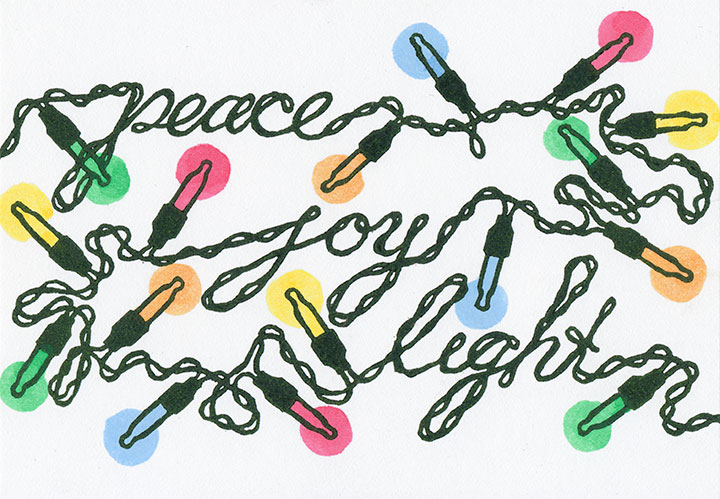
I was afraid I wasn’t going to have any holiday photos to show you—when I was in Portland the other week, my camera took a nosedive after being bumped off my shoulder in a crowded room.
Snippets from my daily journal
So I shipped the lens off to the good folks at Canon for repair, and switched to paper for awhile.
One of Maurice Sendak’s eye-candy stage sets for the Pacific NW Ballet’s Nutcracker
My favorite thing about sketchbooks is that I can take them anywhere—including places where cameras, functioning or not, are strictly verboten.
More Nutcracker scenery, plus Christmas on Pine Street in Seattle
The downside, though, is that it takes me a lot longer to draw a picture than to shoot one—so my output is always smaller than I’d like.
But then the Fedex guy showed up with my lens, good as new and just in time for Christmas.
I managed to refrain from hugging him, and then hopped around the house in manic glee, documenting the holiday the Tailor and I have spent all week creating.
(We finally broke down and bought twinkle lights for the tree; which provided the perfect inspiration for this year’s card!)
Wherever today finds you, have a warm, cozy, abundant, and very merry Christmas.
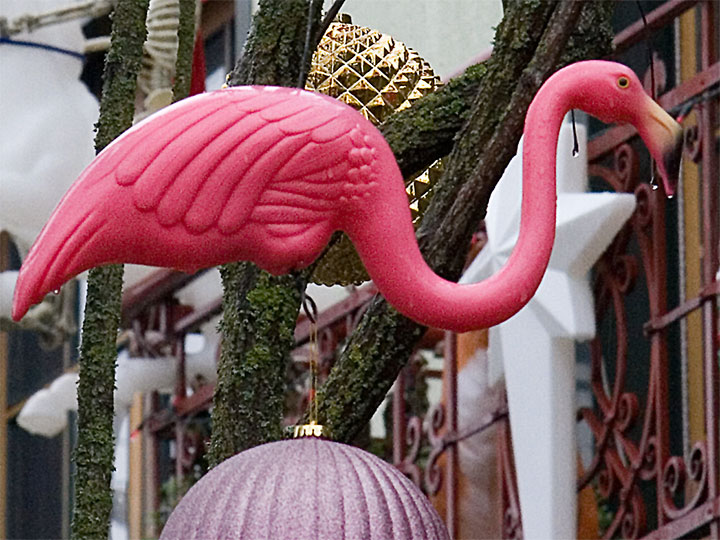
One of the nerdy things I love most in the world is “collecting” regional nicknames for weather systems. I’ve lived in a lot of different places, and have first-hand experience with such things as the Nor’easter, the Albuquerque Low, the Alberta Clipper, and Blood Rain (which, I’ll admit, is as freaky as the name; watching rust-colored droplets fall from the sky and stain every surface—including you—is a disturbing experience).
Here we get the occasional visit from the Pineapple Express—a holiday guest from the South Pacific that overstays its welcome and eats everything in your fridge. And it thanks you with the gift of a warm bath—a gift that keeps on giving: namely, torrential rains, washed-out roads and rails, snowmelt at all but the very highest elevations, and areas of flooding which include, right at this very moment, our basement. (Not to worry; for us, at least, the rain trickles in, gathers in an interesting map of puddles, and trickles back out again when the storm subsides. And for all the well-meaning people who offer us unsolicited remodeling advice, it serves as an excellent illustration of our resolve never to have a finished basement.)
Anyway, while I concede that it made the drive more … er, interesting, the Pineapple Express served as an oddly fitting companion on my trip to Portland yesterday.
For one thing, it gave sudden and perfect context to one hilarious interpretation of a Christmas tree.
It made the bright spots glow—
and turned even the most nauseating corporate decor into a sea of color.
It got the old mental wheels turning by inviting me indoors, from a dose of crafty goodness,
to an entire museum devoted to another kind of craftiness.
And with nothing but a soggy hike waiting outside, it inspired me to take my time and have a good, long look at what I found.
It encouraged me to visit a favorite bakery—
—and warm up over a well-rounded lunch (sorry).
It gave me an excuse to duck into the best bookstore in the entire universe.
And just as daylight waned, it helped a certain somebody’s nose glow oh-so-bright.
Oh, and then, as I walked back to my car for the drive home, it made this song pop into my head. After all, paddling home in a canoe might have been a little more efficient!
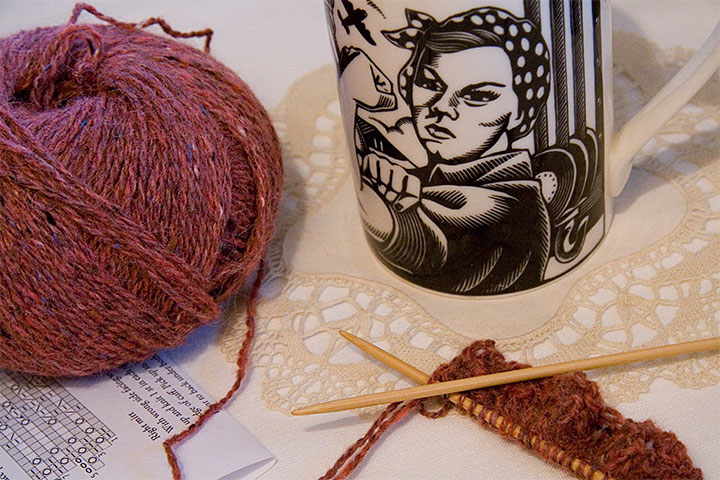
You know what? It’s pretty dark here in the winter.
No, I mean really dark. Not just a sunrise-at-eight-pitch-black-by-five dark, but a kind of silver pall that sets up a permanent residence, even at midday, and makes you forget about the sun. It’s absolutely beautiful when you’re taking a walk in the fog, or curling up with your trusty Rosie mug and a hank of yarn. Not so great when you really need a lot of natural light, though—like, say, for shooting photographs…
…or mixing paint to fill in a huge stack of glorified coloring book pages.
So between the short daylight hours and a desperate need to reserve a little personal time, work on the book has slowed from a breakneck pace to a stately, clip-clopping trot. I still have so much to show you—so much to explain—but my head needs to catch up with my hands first (or is it the other way around?). I’m going, then, to break it up into a series of posts, and take a little extra time to gather my thoughts before I start. I don’t mean to string you along; because the process required working with a kind of tunnel vision for so long, I’m only just now seeing the “finished” product myself. So thanks for your patience—and for being interested enough to stick with me.
Thank you also for the huge outpouring of support you’ve shown since I posted this thing a couple of weeks ago. The comments, links, blog features, Tweets, emails, and amazing reviews are just overwhelming. I simply can’t find the words, except—thank you.
Part of what’s taking me so long is that at the same time, I’m working on a small series (like a baker’s dozen or so) of individual prints of images from the book (exhibit A above). There’s not a whole heap of rhyme or reason as to which illustrations I’ve chosen, except that these are some of my favorites. I’ll be posting them in the shop (believe me, they’ll be a lot more affordable than the book) as I finish them.
In the meantime, it’s time to light a few more lights, and keep the dark at bay so I can see what I’m doing.
Which reminds me—Happy Hanukkah!
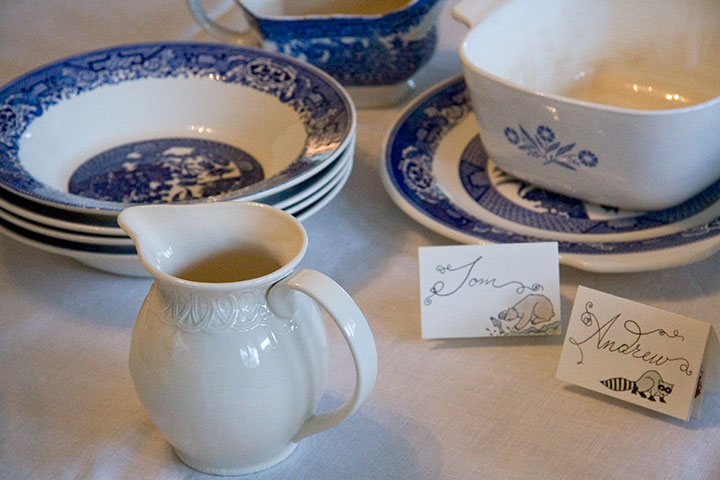
We’re just about to set the table and raise our glasses. Wherever today finds you, and whatever is on your plate, have a warm and happy Thanksgiving!
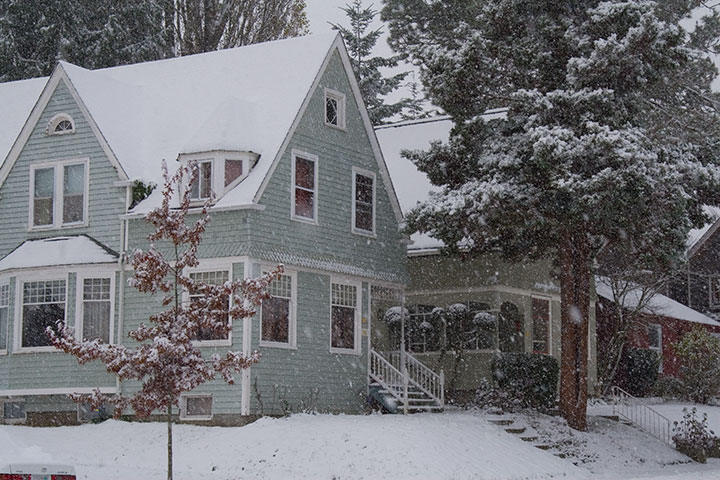
Three inches of snow fell today while I had my morning cuppa. Since the region has possibly the world’s tiniest fleet of snow plows (Seattle has a grand total of twenty-seven; you can imagine what the handful Tacoma’s got), and none of them are out thus far—’round here, three inches is enough to cancel an entire city, let alone school.
Despite the lure of white beaches and urban ski runs, I’m not crazy enough to try descending the hills today. Instead I’m spending my snow day close to home, so I can marvel at how strange the rhodies look under a sugar dusting.
On our rare doses of “real” winter, it always looks like Nature made some sort of clerical error—like the mailman dropping someone else’s holiday cards into our mailbox.
Instead of a blanket of white over a soft grey world, everything glows in blues, greens, yellows … and reds?
Yes, that is an apple, still on the tree—nicely chilled and ready to serve for Thanksgiving.
Let it snow!
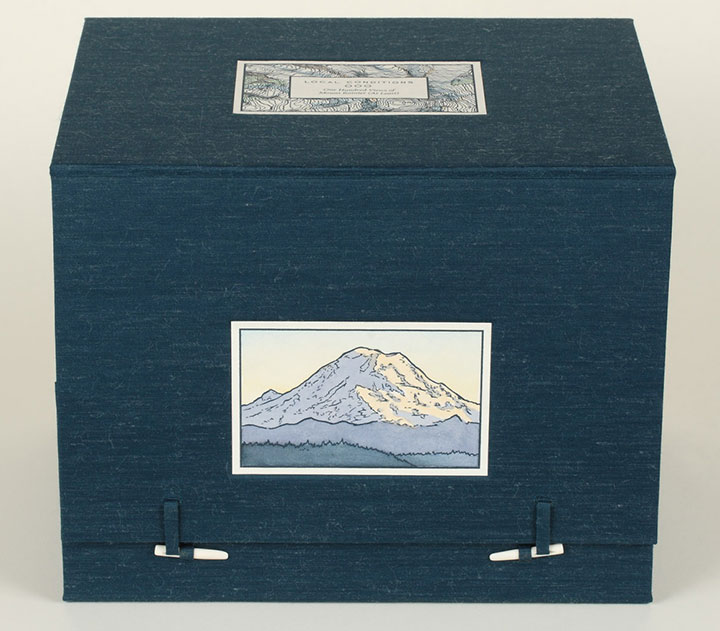
I’ve been hemming and hawing about how best to share this thing with you. Even with Sarah’s excellent photography, it’s just a lot more difficult to explain how it works when I can’t hold the book out into space and demonstrate in real time. It’s a problem with every artist book out there—an interactive sculpture, complete with moving parts, that also happens to tell a story is just dern hard to document.
So for now, I’m going to go through the mechanics of the thing, step by step, and go into the whys and wherefores in other posts. And for those of you who might not be familiar with the term artist book, you’re going to find out really quickly that this isn’t your basic hardcover book. The definition of “artist book” is way too broad to go into within this post (click the above link to go to what I wrote on my F.A.Q. about it), but I’m hoping that by the time you get to the bottom of this post, you’ll have an idea of just how broad the term can be—and what crazy things can happily fall into the category.
Okay, let’s start with the box. When it’s all closed up, Local Conditions is almost a cube (a 10-inch cube that’s heavy enough to be hiding a sack or two of flour inside). On the topmost face of the box is the frontispiece, containing the title and a topographic map illustration of the summit of Mt. Rainier.
The north, south, east and west sides of the box are faced with illustrations of the corresponding faces of Rainier, each depicting the mountain at sunset.
(That’s the eastern face on the left, and the north face beside it.)
Now, those two little bone clasps hold the thing together, and when you flick them out of their loops,
the book opens up, revealing a chest of drawers. Keep pulling on the flap you just raised,
and you’ll find that you can take the whole outer wrapper off and read the colophon (see below) printed on the inside.
The other panels on the wrapper include detailed instructions on everything the book does.
Next, let’s open the drawers—nested in the bottom one you’ll find a Viewing Box (yeah, I know … a box, within a box, within a box … sorry.) that consists of a window, a background panel, and two tabs that stick out from either side.
The tabs match up with the grooved unit at the top of the chest of drawers, and the Viewing Box slides into place.
So now the box is fully expanded, and the book is assembled for use. Now comes the fun part.
Take a closer look at the Viewing Box, and open the top two drawers.
Inside the drawers you’ll find a series of cut-out cards, each printed with a different image. These little image flats slide right into the slots of the Viewing Box,
and face out the window to form an instant picture—kind of like an old-fashioned stage set.
Now here’s the thing:
There are 120 flats to choose from. One hundred and twenty. Each one hand-printed, hand-painted, hand-cut.
By combining, layering and switching the flats in and out of the Viewing Box, you can create seemingly endless scenes of Mt Rainier. I came up with one hundred, and documented them as part of the book (again, I’ll elaborate later), but I’m more interested in how many you can dream up.
(Hint: a lot. Thousands. Millions. To be precise, 1.4 x 1015, or 1.4 quintillion, if you really wanted to push the envelope.)
• • • • • • • • • • • • • • • • • • • • • • • • • • • • • • • • • • • • • • • • • • • • • • • • • • • • • • • • • • • •
Local Conditions: One Hundred Views of Mt. Rainier (At Least)
Edition size: 26 numbered books and 5 roman-numeraled artist proofs
Book size: 10 x 8 x 8 inches when closed
Viewing window: 3 x 5 inches
Artist book consisting of viewing box and 120 image flats, illustrated and compiled from data collected in person, on location, over the course of two years. Housed in a set of drawers with nested stab-bound book and Japanese-style outer wrapper. Images and maps are hand-drawn, letterpress printed and individually hand-painted with watercolor. All image flats are hand-cut.
For price/purchase info, please contact me.
Edited to add (November 2011): As a supplement to the artist book, I also created a suite of 15 limited-edition letterpress prints, featuring some of my favorite scenes from the book. Just like the flats in the book, each print is letterpress printed and hand-painted with watercolor. You can find all 15 prints in the shop.
Colophon reads:
Japanese artist Katsushika Hokusai (1759 – 1849) is perhaps best known for his seminal works, Thirty-Six Views of Mount Fuji and One Hundred Views of Mt. Fuji. The two series of woodblock prints, published from 1829 to circa 1847, depict the sacred peak within the context of landscapes and scenes of daily life. At the heart of the series is Hokusai’s own obsession with immortality, and his fascination with Fuji’s eternal presence.
Therein lies the rub: Fuji is anything but eternal. Beyond the usual, abstract geologic transience of eroding rock and drifting continents, Fuji is an active stratovolcano. Its days—and those of the lives and lands at its base—are numbered.
Here in Washington state, just forty miles southeast of my home, lies Fuji’s taller, more volatile, American twin. Variously named Tacobet, Tahoma and Ti’Swaq’, among others, by the region’s indigenous peoples, or simply “The Mountain” by contemporary locals—its most arbitrary moniker, coined in 1792 by Captain George Vancouver, is the one that stuck: Mount Rainier.
It’s easy to forget Rainier’s impermanence. It has presided over thousands of years of indigenous culture, followed by the encroachment and permanent occupation of white settlers. It oversaw the construction of the Northern Pacific Railroad, the fever of the Klondike Gold Rush, the splendor of the Alaska-Yukon-Pacific Exposition. It stood in judgment while the American descendants of Hokusai’s countrymen were imprisoned beside the wooden-frame rollercoaster of the Western Washington Fairgrounds, at the internment center nicknamed Camp Harmony. And it has watched the rise and decline and rise again of Tacoma, the City of Destiny lovingly misnamed in its honor.
Yet all the while, Rainier has changed as much as the tableau at its feet. Its volcanic restlessness shifts its form, as our capricious Northwestern weather masks its appearance. It hides, or dominates, depending on the time of day or year. Even we have proved a catalyst, as our warming climate chases its alpine glaciers into retreat at the speed of industry.
And one day—whether tomorrow or in a million years, in an explosion of ash or by the erosion of time—Mount Rainier will disappear completely. I can’t begin to predict the future, but I can attempt to capture the present moment. One hundred present moments, to be exact. If nothing else, Local Conditions is a reminder of the lesson of this place: that here in the Ring of Fire, we never see the same Mountain twice.
* * *
Illustrated, designed, printed and bound by Chandler O’Leary, through freak snowstorms, record heat, and a thousand gentle rains in Tacoma, Washington. Each of the book’s 120 image flats is illustrated and compiled from sketches, photographs and data collected in person, on location, from September 2008 to October 2010. All text and images were letterpress printed in Hokusai’s indigo ink, down the street at Springtide Press. Images and topographic map patterns are hand-drawn and watercolored.
For making it possible to turn this crazy idea into an even crazier reality, many heartfelt thanks to Jessica Spring, Sarah Christianson, the Tacoma Arts Commission, the University of Puget Sound Collins Memorial Library, and the Book Arts Guild. Thanks also to the weather, for always, despite a notorious reputation, seeming to hold just long enough for me to grab the camera and jump in the car.
Produced with the support of a Tacoma Artists Initiative Program grant from the City of Tacoma Arts Commission.
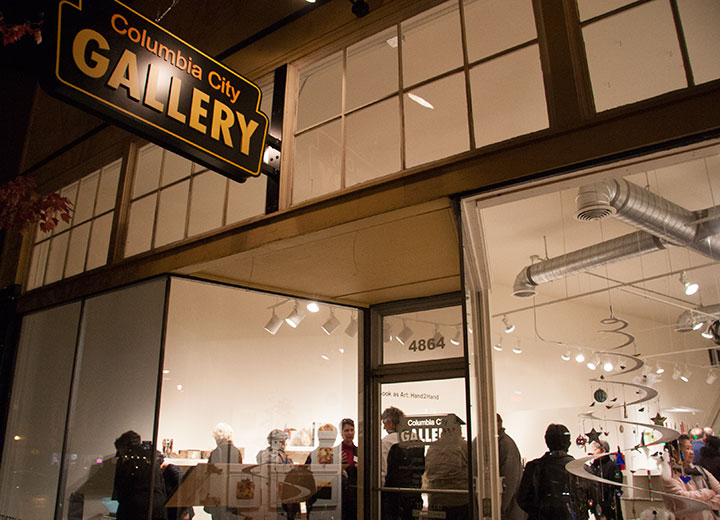
I know I’ve made quite a fuss over my new artist book, but while all my energy has gone into putting that one out into the world, one of my older books is also getting some more time in the limelight.
Photo by Nathaniel Willson
This fall you can find The Faery Gardener on display in Seattle, along with many other contemporary artist books by Northwestern printmakers, designers, illustrators and binders.
Hand2Hand: The Book as Art
Exhibit runs through January 9
Columbia City Gallery
4864 Rainier Ave. South, Seattle
When I first started making artist books, you would have been hard-pressed to find a gallery show centered on the subject. Now this sort of exhibit is everywhere—I mean, I’m just one artist, and I’ve been in several this year alone! It seems like the book arts are just another, well-accepted part of the fine arts—and that’s what I’ve been hoping for, all along.
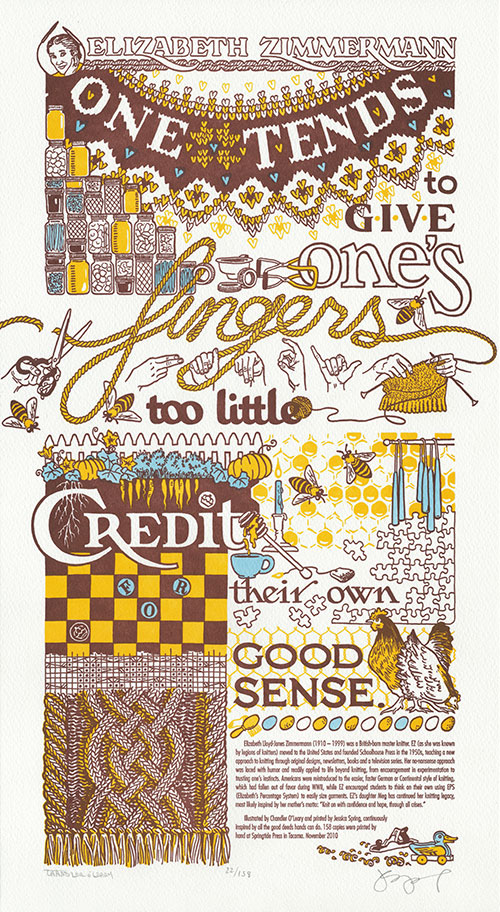
Maybe it’s the changing seasons. Or the fact that the farmers market runneth over with delicious autumn goodies. Or maybe we just wanted to talk about something that made us smile, for a change—because this time, for our tenth Dead Feminist broadside, Jessica and I have turned to a subject somewhat lighter of heart.
From the likes of urban homesteaders, artisans, D.I.Y.-ers, and hobbyists of all stripes, brilliant handiwork is all around us. We are in constant admiration of the power of one’s own two hands, and the good deeds they can do. And for the perfect symbol of a handmade life infused with joy and meaning, we’ve handed the microphone to Elizabeth Zimmermann:
One tends to give one’s fingers too little credit for their own good sense.
Now, as many of you probably know, Ms. Zimmermann was a knitter (that’s an understatement; I’d say more like All-Time Super-Queen Knitter of the Cosmos, Forever and Ever, Amen). But like every knitter, there is so, so much more to her than that. So rather than simply leaving it at yarn and wool, we discovered a cornucopia of the pursuits that fingers like to turn to when they’re not knitting. There are no idle hands here, to be sure.
Just in time for the fall harvest and in cozy preparation for the winter months ahead (or for our friends in the southern hemisphere, looking forward to a fruitful summer), Get Handy overflows with simple pleasures and home comforts. Elizabeth drafts a cable pattern and whips up a Fair Isle yoke. A little slow food takes root in the garden. Honeybees guard a new crop of candles. Fresh home-canned treats stock the shelves. Chickens scratch along a fence of golden (darning) eggs. Over a cup of tea, puzzles piece together and checkers crown kings. And when they’ve put down the yarn and scissors, the hands spell it out for you in American Sign Language.
Oh, and the Tailor’s blueberries and Jessica’s dilly beans make a cameo appearance. Yum.
A portion of the proceeds from Get Handy will be donated to the amazing healing hands of Médecins Sans Frontières / Doctors Without Borders, via Tricoteuses Sans Frontières / Knitters Without Borders, which organizes knitters to raise funds for MSF/DWB. MSF, winner of the 1999 Nobel Peace Prize, is a medical relief organization dedicated to assisting people in distress around the world.
• • • • • • • • • • • • • • • • • • • • • • • • • • • • • • • • • • • • • • • • • • • • • • • • • • • • • • • • • • • •
Get Handy: No. 10 in the Dead Feminists series
Edition size: 158
Poster size: 10 x 18 inches
Printed on an antique Vandercook Universal One press, on archival, 100% rag paper. Each piece is hand-colored and signed by both artists.
Colophon reads:
Elizabeth Lloyd-Jones Zimmermann (1910 – 1999) was a British-born master knitter. EZ (as she was known by legions of knitters) moved to the United States and founded Schoolhouse Press in the 1950s, teaching a new approach to knitting through original designs, newsletters, books and a television series. Her no-nonsense approach was laced with humor and readily applied to life beyond knitting, from encouragement in experimentation to trusting one’s own instincts. Americans were reintroduced to the easier, faster German or Continental style of knitting, which had fallen out of favor during WWII, while EZ encouraged students to think on their own using EPS (Elizabeth’s Percentage System) to easily size garments. EZ’s daughter Meg had continued her knitting legacy, most likely inspired by her mother’s motto: “Knit on with confidence and hope, through all crises.”
UPDATE: poster is sold out. Reproduction postcards available in the Dead Feminists shop!